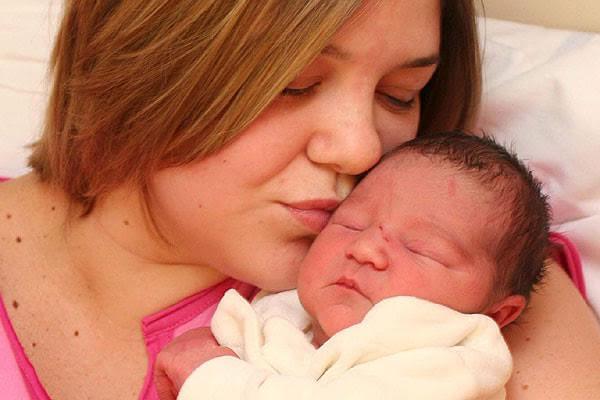Risks of a Retained Placenta

Delivery does not end once the baby is born. Expulsion of the placenta is described as the third vital phase of the process. This phase tends to be quick and easy, because it happens after the effort of pushing out the baby. Plus, injecting synthetic oxytocin can induce uterine contractions that help to expel the placenta.
What is a retained placenta?
Sometimes the expulsion of the placenta doesn’t always happen naturally after labor. When the placenta isn’t expelled in the first hour after delivery, it can create certain risks.
A retained placenta also occurs when the placenta is only partially expelled. This usually occurs during a vaginal delivery, but it may also not be completely removed during a cesarean section.
A partially expelled placenta can be determined by analyzing the placenta to see whether it has a tear or otherwise shows that it’s not the entire placenta. In rare cases, a retained placenta doesn’t show symptoms instantly, but rather little by little.
What causes a retained placenta?
Some factors can increase the risk of a retained placenta. Among the main culprits are:
- The placenta was implanted into a scar in the uterus
- The birth was premature
- Childbirth was induced
- The placenta is lobular or has other abnormalities
If a woman presents one of these risks, it isn’t a guarantee of future complications. The doctor will give pertinent instructions. Therefore, it is important for the mother to be alert during the third phase of her baby’s birth.

Signs and Symptoms
To identify whether the placenta has been retained, pay attention to the following signs:
- Postpartum hemorrhaging after the apparent expulsion of the placenta
- Strange vaginal discharge, especially with a foul odor
- Fever
- Cramps
- Cracks or tears in the expelled placenta
- Late milk production
Most women with postpartum problems usually worry about low milk production or a delay in lactation. In the event of a retained placenta, there is a considerable delay, which should be a strong indicator that this disorder is occurring.
Treatment
If the mother has a natural third phase and the placenta is not expelled, the doctor will probably want to give an injection of synthetic oxytocin. This will help stimulate the uterus and cause it to contract, which should expel the placenta. But if this doesn’t work, the doctor will try another medicine.
If there is a concern about infection when you are discharged, some doctors will re-admit the mother. In this case, an outpatient procedure is performed to eliminate the retained placenta. When you go home, you’ll be given oral antibiotics to prevent and treat signs of infection.
Can a retained placenta be prevented?

All deliveries are different, so it is very difficult to reduce the risks of rare complications. If the woman has had a retained placenta with a previous birth, she has a greater risk of experiencing that again. Therefore, the specialist should be very careful and pay close attention during the third phase.
When the birth is low risk, there are not many medical interventions, so the risk of complications is low too. The mother and baby should be together with skin-to-skin contact and no discomfort, which can reduce the risk of a retained placenta.
Avoid unnecessary inductions, as too much synthetic oxytocin can cause uterine atony (weakness). This happens when the uterus isn’t contacting effectively because it’s not in optimal condition. That’s why it’s important to communicate with the midwife or doctor. It is convenient to establish trust and confidence to have greater certainty of no unexpected complications.
This text is provided for informational purposes only and does not replace consultation with a professional. If in doubt, consult your specialist.








